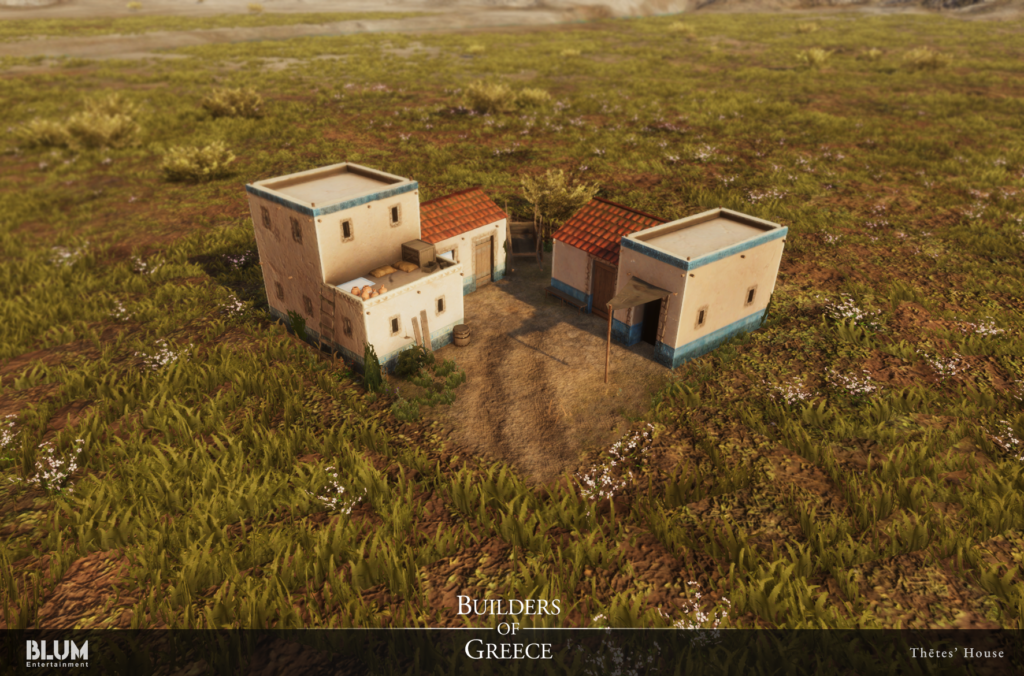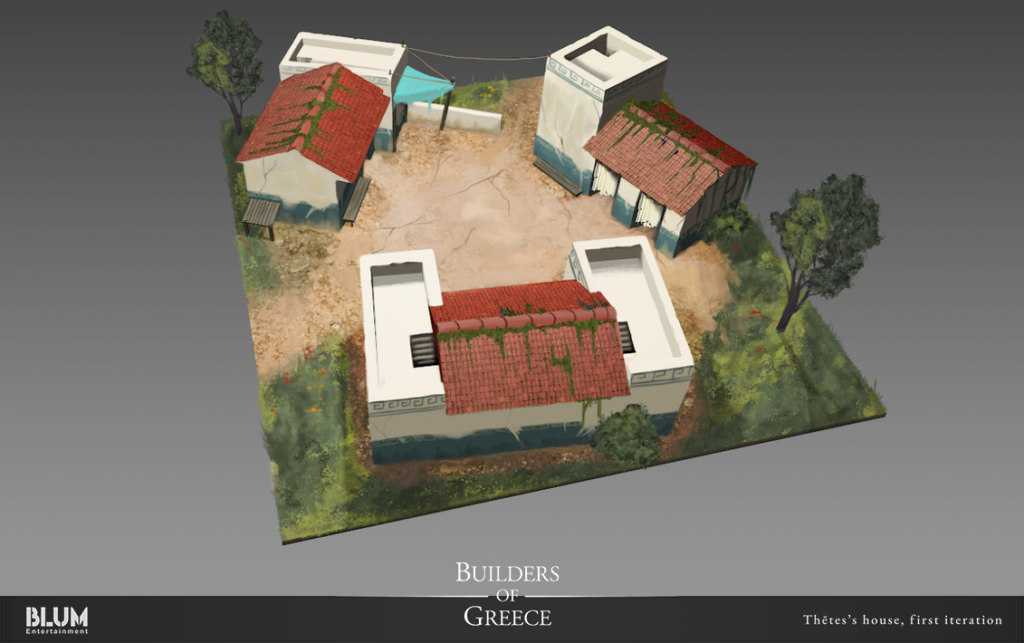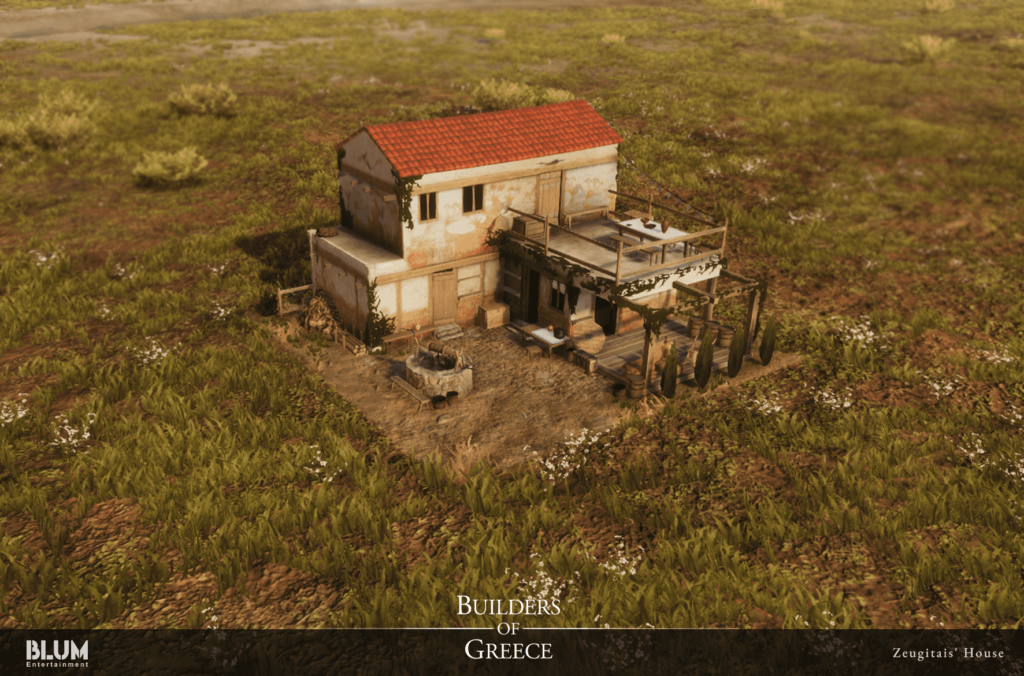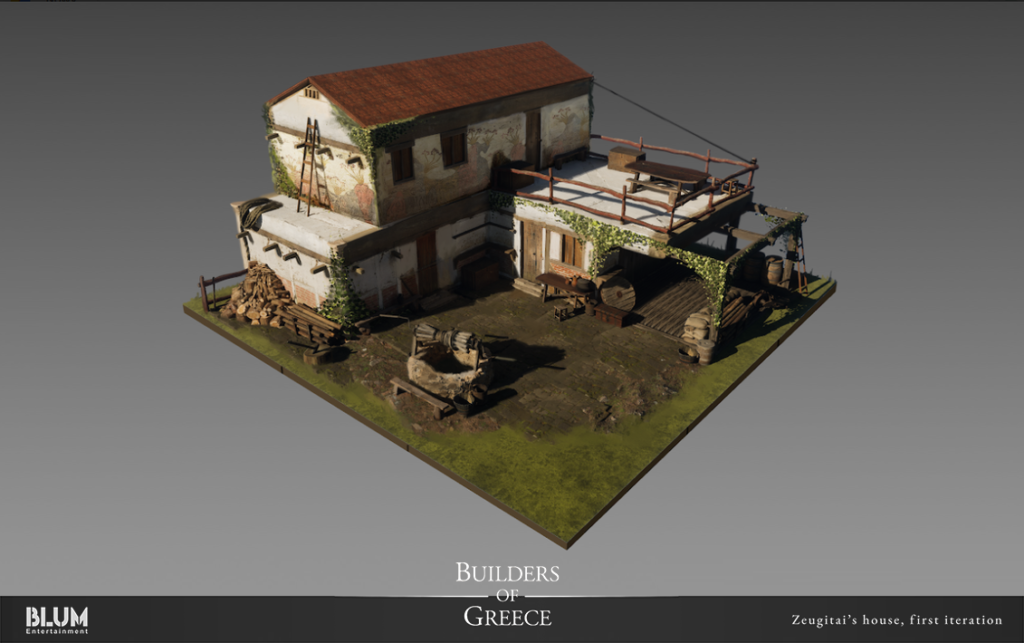Welcome to the next part of our “Architect’s Corner” series, in which we tell you all about the buildings you will have at your disposal as a ruler of an ancient Greek Polis. Discover interesting tips and tricks, learn how to effectively plan the development of your city, and check out how many useful structures you can raise – all this to the glory of a great ruler, such as yourself! 👑
Thētes’ Houses
The foundation of the society you will happen to rule are tireless, hardworking and, telling the truth as it is, rather simple people. In Ancient Greece, they were called Thētes – the lowest class of free men in the whole state, consisting mostly of poor peasants, small craftsmen, and landless hired workers 

Speaking of Thētes’s needs… one of the most important necessities of mankind is to have shelter and a roof over their heads. The bigger, more comfortable, and well-stocked, the better! 
The construction of such simple houses does not require a lot of raw materials and work, so your builders will be able to build plenty of them in a short period of time. Thētes’ houses prove to be a great solution, whenever your city is experiencing a demographic surplus and needs to host numerous newcomers from all over Greece. Of course, with time, accumulated wealth, and access to demanded goods, simple houses can advance to something more 

Zeugitais’ Houses
As we all know, Ancient Greeks had a soft spot for pottery 

As you can probably guess, working in a place such as a Clay Pit is not very comfortable and pleasant, however scorching sun, dirt, and hard physical labor are not enough to put your workers off! You will need up to five of them, as the Clay Pit is a rather big building. Before you decide to build it, make sure that you have found the right place. The Clay Pit won’t work if not placed on a clay field – be sure to look for it in the surroundings of your City! Once it is built in the right place and gets its staff allocation, raw clay can begin its second life.
The first building that cannot do without the support of a Clay Pit is, of course, the Ceramics workshop. This is where raw clay is formed and processed into ceramics – one of the most useful goods in ancient Polis 

In the following parts of the series, we will return with descriptions of many other cool structures that will ensure the safety, well-being, and development of your city. We hope that the buildings presented today will find their place among the streets of your Polis, and that they will contribute to the growth of your magnificent kingdom! 😀 As always – thank you and stay tuned!


